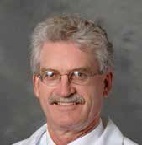Rural and urban hospitals evolve with the shift from volume to value
December 21, 2016
by Lisa Chamoff, Contributing Reporter
Sitting just under two hours north of Detroit in Sandusky, Michigan, McKenzie Health System has different needs than its urban counterparts to the south. Three years ago, hospital leaders decided to take some new approaches to handle the challenges faced by rural facilities, such as keeping up with the high costs of new technology and attracting physicians to a more remote part of the country, where the sparse population skews toward older and poorer.
In October 2013, McKenzie Health System finalized an affiliation with Marlette Regional Hospital, another critical access hospital located about 30 miles away. The two facilities operate under one parent organization, sharing resources, making group purchases and offering more to talented specialists. “Instead of becoming part of a big urban system, we wanted to continue to deliver the type of health care that people were used to,” says Steve Barnett, president and chief executive officer of McKenzie Health System. “An urban system might stamp their delivery model on a rural community, and it might not be what the community needs.”
As rural hospitals continue to close — at least 15 in 2016 and more than 70 since 2010, according to the North Carolina Rural Health Research Program — challenged facilities have had to adapt by merging and changing how they deliver health care. Aside from the merger, McKenzie Health System has also taken an aggressive role in changing how it provides care. For three years, it has been part of the National Rural Accountable Care Organization, with a focus on value instead of volume, following the trend in health care nationally. McKenzie Health System also redesigned the staffing model four years ago so that emergency department physicians also function as hospitalists, providing more consistent care to patients who are hospitalized. In some ways, being a rural facility has advantages.
“We have the distinct advantage as small rural critical access hospitals of being able to adapt to the health care delivery environment more quickly than a larger organization,” Barnett says. “We can test different process changes that target a particular outcome measure. If it works, great. If not, we can quickly adjust.”
Tim Putnam, president of Margaret Mary Health, a not-for-profit critical access hospital in Batesville, Indiana, located an hour from both Cincinnati and Indianapolis, agrees. “The move from volume to value is something we initially saw as quite a challenge,” Putnam says. “But small community hospitals like ours are well positioned to be successful in that model.” Unlike urban facilities, which face steep competition and can have a tough time reaching out to people in densely populated communities, rural hospitals can help boost healthy living at social organizations and religious institutions, a practice that is becoming more common.
“When I go into churches or other social organizations here, all of the people in these groups are served by my hospital,” Putnam says. “I can invest in a congregational health improvement plan knowing that our entire investment will improve the health of patients directly served by my hospital.” Margaret Mary Health also has staffing challenges, but has successfully recruited people who have grown up in the area to work at the hospital, including many health care professionals who have come through mentorship programs the hospital coordinates with local high schools.
“To build that pipeline takes a long time and a lot of effort, but we’ve already had a number of successes,” Putnam says. Barnett, of McKenzie Health System, advises other hospital leaders to look “for partners that are truly interested in your success and developing a culture that is comfortable with the changes that we need to be making today. Transitioning the delivery of care to wellness and value is not easy and often conflicts with how we are paid, but it is where we need to go.”
Similar, but different, in cities
Urban hospitals are also facing a number of challenges, due to the low-income populations they serve and a barrage of government cuts. Changes to the formula for distributing DSH payments, enacted under the Affordable Care Act, have a big impact on urban facilities, which serve a high percentage of patients living below the poverty line, and they still face uncompensated care and payment reductions for hospital readmissions that don’t account for a patient’s socioeconomic status, and compare hospitals without similar patient populations, says Ellen Kugler, executive director of the National Association of Urban Hospitals. “Operation is challenging as payment systems are evolving and changing,” Kugler says. In Michigan, the Henry Ford Health System has had success collaborating with a network of skilled nursing facilities to reduce hospital readmissions.
“It involves a closer critical connection between hospitals and nursing homes,” says David Nerenz, director of the Center for Health Policy and Health Services Research at the Henry Ford Health System. “We may have a hospital-based physician make rounds in the nursing home and look for signs of trouble. It means working with the nursing staff to go over what to do if a patient develops a fever or an infection and what to do to prevent falls.” There continues to be concern about new rules on hospital outpatient providers, which can only be on a hospital campus. In urban areas where a hospital may not have a self-contained campus, the rules are particularly harsh, Kugler says.
“Many urban hospitals are very narrow,” Kugler says. “Their outpatient sites may be a block or two away because that’s the way it is in a city. If it’s not on campus, it is freestanding and not provider-based. That changes the reimbursement significantly. They are billed as a community provider, not as the hospital.”
Government efforts
While there have been efforts over the years to address challenges facing rural and urban hospitals with legislation, success has been elusive. Last year, U.S. Rep. Sam Graves, RMissouri, introduced the Save Rural Hospitals Act, which would, among other things, eliminate Medicare sequestration cuts for rural hospitals, eliminate reductions to rural Medicare and Medicaid Disproportionate Share Hospital (DSH) payments, which cover the cost of providing care to uninsured patients, reduce and delay the application of penalties for failure to achieve meaningful use with electronic health records, and eliminate the requirement for doctors to certify that a Medicare patient will be discharged or transferred to another hospital within 96 hours, which is a condition of payment.
On the urban side, earlier this year, the U.S. House of Representatives Ways and Means Committee advanced legislation that would compare similar hospitals for the purposes of determining readmission penalties, but, like the Save Rural Hospitals Act, it has encountered legislative stagnation. Hospital advocates are hopeful that a change in government via the recent election can help bring new eyes to the issues facing hospitals. “I think that with a new Congress and new president it could refresh the screen in terms of the dynamics we’re talking about,” says Brock Slabach, senior vice president for member services at the National Rural Health Association. “This is something that can’t be delayed much longer because the more we wait, the more hospitals that close. Once they go away, they’re not coming back.”
New ideas
Last year, the American Hospital Association (AHA) established a task force with the goal of ensuring access to health care in vulnerable rural and urban communities by exploring alternative models. The task force recently released several strategies to help both types of hospitals address challenges. The strategies include working with other organizations in the community to address a lack of affordable housing and food insecurity; using a global budget payment program, in which hospitals receive a fixed amount for all the costs associated with caring for a patient, with incentives to communities to contain health care costs and improve the quality of care; and providing only emergency and primary care services and reducing or eliminating inpatient services.
The strategies do have some precedent, explains Priya Bathija, senior director of health policy at the AHA. Maryland, for example, has been testing out the global budget payment program, a model that needs an entire region or state on board. Several facilities have also begun focusing on emergency and primary care services, such as the Carolinas HealthCare System Anson in Wadesboro, N.C., whose success has been reported on in HealthCare Business News. “There’s no one-size-fits-all solution that’s going to help all these communities,” Bathija says. “Some communities may be able to use one of these options. Some can use more than one.”
In October 2013, McKenzie Health System finalized an affiliation with Marlette Regional Hospital, another critical access hospital located about 30 miles away. The two facilities operate under one parent organization, sharing resources, making group purchases and offering more to talented specialists. “Instead of becoming part of a big urban system, we wanted to continue to deliver the type of health care that people were used to,” says Steve Barnett, president and chief executive officer of McKenzie Health System. “An urban system might stamp their delivery model on a rural community, and it might not be what the community needs.”
As rural hospitals continue to close — at least 15 in 2016 and more than 70 since 2010, according to the North Carolina Rural Health Research Program — challenged facilities have had to adapt by merging and changing how they deliver health care. Aside from the merger, McKenzie Health System has also taken an aggressive role in changing how it provides care. For three years, it has been part of the National Rural Accountable Care Organization, with a focus on value instead of volume, following the trend in health care nationally. McKenzie Health System also redesigned the staffing model four years ago so that emergency department physicians also function as hospitalists, providing more consistent care to patients who are hospitalized. In some ways, being a rural facility has advantages.
“We have the distinct advantage as small rural critical access hospitals of being able to adapt to the health care delivery environment more quickly than a larger organization,” Barnett says. “We can test different process changes that target a particular outcome measure. If it works, great. If not, we can quickly adjust.”
Tim Putnam, president of Margaret Mary Health, a not-for-profit critical access hospital in Batesville, Indiana, located an hour from both Cincinnati and Indianapolis, agrees. “The move from volume to value is something we initially saw as quite a challenge,” Putnam says. “But small community hospitals like ours are well positioned to be successful in that model.” Unlike urban facilities, which face steep competition and can have a tough time reaching out to people in densely populated communities, rural hospitals can help boost healthy living at social organizations and religious institutions, a practice that is becoming more common.
“When I go into churches or other social organizations here, all of the people in these groups are served by my hospital,” Putnam says. “I can invest in a congregational health improvement plan knowing that our entire investment will improve the health of patients directly served by my hospital.” Margaret Mary Health also has staffing challenges, but has successfully recruited people who have grown up in the area to work at the hospital, including many health care professionals who have come through mentorship programs the hospital coordinates with local high schools.
“To build that pipeline takes a long time and a lot of effort, but we’ve already had a number of successes,” Putnam says. Barnett, of McKenzie Health System, advises other hospital leaders to look “for partners that are truly interested in your success and developing a culture that is comfortable with the changes that we need to be making today. Transitioning the delivery of care to wellness and value is not easy and often conflicts with how we are paid, but it is where we need to go.”
Similar, but different, in cities
Urban hospitals are also facing a number of challenges, due to the low-income populations they serve and a barrage of government cuts. Changes to the formula for distributing DSH payments, enacted under the Affordable Care Act, have a big impact on urban facilities, which serve a high percentage of patients living below the poverty line, and they still face uncompensated care and payment reductions for hospital readmissions that don’t account for a patient’s socioeconomic status, and compare hospitals without similar patient populations, says Ellen Kugler, executive director of the National Association of Urban Hospitals. “Operation is challenging as payment systems are evolving and changing,” Kugler says. In Michigan, the Henry Ford Health System has had success collaborating with a network of skilled nursing facilities to reduce hospital readmissions.
“It involves a closer critical connection between hospitals and nursing homes,” says David Nerenz, director of the Center for Health Policy and Health Services Research at the Henry Ford Health System. “We may have a hospital-based physician make rounds in the nursing home and look for signs of trouble. It means working with the nursing staff to go over what to do if a patient develops a fever or an infection and what to do to prevent falls.” There continues to be concern about new rules on hospital outpatient providers, which can only be on a hospital campus. In urban areas where a hospital may not have a self-contained campus, the rules are particularly harsh, Kugler says.
“Many urban hospitals are very narrow,” Kugler says. “Their outpatient sites may be a block or two away because that’s the way it is in a city. If it’s not on campus, it is freestanding and not provider-based. That changes the reimbursement significantly. They are billed as a community provider, not as the hospital.”
Government efforts
While there have been efforts over the years to address challenges facing rural and urban hospitals with legislation, success has been elusive. Last year, U.S. Rep. Sam Graves, RMissouri, introduced the Save Rural Hospitals Act, which would, among other things, eliminate Medicare sequestration cuts for rural hospitals, eliminate reductions to rural Medicare and Medicaid Disproportionate Share Hospital (DSH) payments, which cover the cost of providing care to uninsured patients, reduce and delay the application of penalties for failure to achieve meaningful use with electronic health records, and eliminate the requirement for doctors to certify that a Medicare patient will be discharged or transferred to another hospital within 96 hours, which is a condition of payment.
On the urban side, earlier this year, the U.S. House of Representatives Ways and Means Committee advanced legislation that would compare similar hospitals for the purposes of determining readmission penalties, but, like the Save Rural Hospitals Act, it has encountered legislative stagnation. Hospital advocates are hopeful that a change in government via the recent election can help bring new eyes to the issues facing hospitals. “I think that with a new Congress and new president it could refresh the screen in terms of the dynamics we’re talking about,” says Brock Slabach, senior vice president for member services at the National Rural Health Association. “This is something that can’t be delayed much longer because the more we wait, the more hospitals that close. Once they go away, they’re not coming back.”
New ideas
Last year, the American Hospital Association (AHA) established a task force with the goal of ensuring access to health care in vulnerable rural and urban communities by exploring alternative models. The task force recently released several strategies to help both types of hospitals address challenges. The strategies include working with other organizations in the community to address a lack of affordable housing and food insecurity; using a global budget payment program, in which hospitals receive a fixed amount for all the costs associated with caring for a patient, with incentives to communities to contain health care costs and improve the quality of care; and providing only emergency and primary care services and reducing or eliminating inpatient services.
The strategies do have some precedent, explains Priya Bathija, senior director of health policy at the AHA. Maryland, for example, has been testing out the global budget payment program, a model that needs an entire region or state on board. Several facilities have also begun focusing on emergency and primary care services, such as the Carolinas HealthCare System Anson in Wadesboro, N.C., whose success has been reported on in HealthCare Business News. “There’s no one-size-fits-all solution that’s going to help all these communities,” Bathija says. “Some communities may be able to use one of these options. Some can use more than one.”







